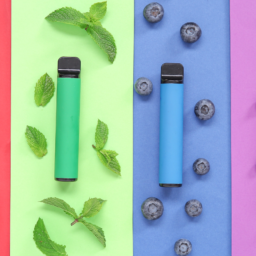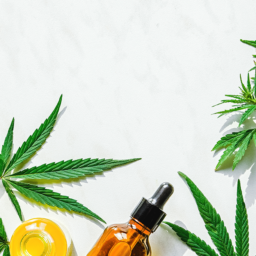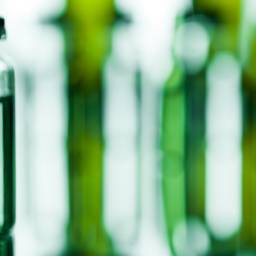General information
CBD (cannabidiol) has been steadily gaining popularity for some years now, and the global CBD market is expected to reach a value of between $47 billion and $55 billion by 2028.
Despite CBD’s widespread use, marketing products with that ingredient still raises a number of legal issues. The recent judgements of the administrative courts in Poland have liberalized the requirements for marketing products with CBD, though.
On 7th May 2022, the Polish Act on counteracting drug addiction was amended, raising the legal level of THC in cannabis plants from 0,2% to 0,3%.
The recently amended law makes it also possible for Polish research institutes to grow and collect for medical purposes cannabis plants and resin with levels of THC exceeding 0,3%. The law changes are meant to shorten the supply chain, solve the availability issues and lower the price of the final product.
Manufacturing, processing, converting, importing or distributing narcotic drugs or psychotropic substances requires a permit from the Chief Pharmaceutical Inspector, thus also THC, regardless of the THC content of the hemp variety or the THC concentration in the final product, will be subject to such regime. Therefore, the above activities concerning products with THC require a permit, although this stance of the supervisory authorities has been met with criticism.
CBD in food
Probably the most prevalent form of CBD is an oil, which can be added to drinks or taken orally on its own. Research has shown its usefulness in alleviating symptoms of anxiety disorders, sleep disorders and chronic pain. CBD can also be found as an additive in cookies, chocolate and drinks.
Classification and authorization
Regardless of being sold as an oil, or a packaged food with added CBD, such products are regarded as food. As a result, their maker must meet certain conditions before marketing them.
According to EU Regulation (EU) 2015/2283, any CBD extracts (or products derived from them) must be classified as “novel food” and must go through a specific authorization process before being sold freely.
Food business operators can place a novel food on the EU market only after the European Commission has adopted an implementing act authorizing the placing on the market of a novel food and updating the Union list of novel food. Once authorized, the novel food may be placed on the market.
As of mid-March 2022, the European Commission has received more than 150 application for CBD as Novel Food and 19 of them are under assessment of EFSA. EFSA just issued Statement on safety of CBD as a novel food: data gaps and uncertainties. EFSA has not arrived to the conclusion that CBD consumption is dangerous, however, concluded that there are certain data gaps which do not allow a comprehensive risk assessment to be made. This applies in particular to insufficient data regarding on the effect of CBD on the liver, gastrointestinal tract, endocrine system, nervous system and psychological well-being.
Polish perspective
Recent Polish court rulings (see court case V SA/Wa 5258/21) appear to have further liberalized the conditions for the marketing hemp products, stating that while CBD extracts have to be considered ‘novel food’ and undergo relevant authorization procedures, cannabis plants (Cannabis sativa L.) should not be regarded as such. For that reason, foods containing cannabis plants do not have to be subject to such procedures.
Because CBD is produced from the hemp plant, it’s important to pay attention to levels of THC, another cannabinoid. Entities that import, manufacture, process, or distribute products containing narcotic or psychotropic substances must comply with a number of restrictions laid forth by Polish regulations, including specifc licenses. In particular the authorities claim that the licensing requirement also applies to the distribution of finished products containing less than 0.3% THC.
The presence of THC in food is still a contentious issue, with Polish authorities issuing orders outright prohibiting the presence of THC in food.
THC, the major psychoactive ingredient found in hemp, is listed among the psychotropic substances, narcotics, and novel psychoactive substances in the Minister of Health’s Regulation. As a result, only hemp varieties with a THC level of less than 0.3% on a dry weight basis may be used in food production; the THC content applies to the raw material, not the finished product. Although the law does not define a limit THC percentage in the finished product, it is assumed that it should not exceed 0.3% THC. Furthermore, if the final product contains THC, each case requires a risk assessment, which should be conducted using the so-called acute reference dose, which was set at
1 g D-THC/kg.
EU law
The EU regulatory authorities have drafted a revision of Regulation 1881/2006 setting maximum levels for certain contaminants in foodstuffs, according to which the maximum level of THC in ground hemp seed, (partially) defatted hemp seed, and other products derived from hemp seed would be 3.0 mg/kg, and in hemp seed oil would be 7.5 mg/kg.
Cosmetics with CBD
Taking advantage of CBD’s popularity, an increasing number of beauty industry companies launches new products with that ingredient.
EU law
The substances prohibited from being added to cosmetic products are listed in Annex II of EU Regulation 1223/2009 on cosmetic products. That annex includes all substances listed in Tables I and II of the Single Convention on Narcotic Drugs of 1961, among which cannabis, cannabis resin, as well as cannabis extracts and tinctures can be found. For that reason, additives containing any level of THC cannot be used in cosmetics.
However, it is not forbidden to use ‘pure’ CBD, but that issue was controversial until only recently. 2019 and 2021 updates to the EU cosmetic ingredient database (CosIng) gave manufacturers a strong argument that CBD is an acceptable ingredient for cosmetic products. Products containing CBD can be labelled as having anti-sebum, antioxidant, skincare and protective properties.
Polish perspective
According to the provisions of the Act on Counteracting Drug Addiction, manufacturing, processing, converting, importing or distributing narcotic drugs or psychotropic substances – and thus also THC, requires a permit, regardless of the THC content of the hemp variety or the THC concentration in the final product. Therefore, the above activities regarding products containing THC require a permit, although this stance of the supervisory authorities has been met with criticism.
CBD vape cartridges and dried hemp with CBD
Cartridges
With the growing popularity of e-cigarettes, vaporizer (vape) cartridges with CBD have also been introduced to the market. Because such products are not currently specifically regulated in Poland, there are no clear rules governing their marketing.
Although CBD cartridges do not contain tobacco or nicotine, they are regulated in the same way as refill containers, tanks, or disposable cartridges described in the Act on Health Protection Against the Effects of Tobacco and Tobacco Products. Their definition in the preceding law is identical to the definition in the Tobacco Products Directive 2014/40/EU.
Please note that on 20th May 2021, the European Commission published a report stating that there is no clarity on the regulation of cannabis extracts or synthetic CBD in e-liquids which may herald legal changes of this matter.
Dried hemp
Dried hemp containing CBD is classified as a ‘herbal product for smoking.’ It is a plant-, herb-, or fruit-based product that does not contain tobacco and can be consumed through a combustion process, according to the Act on Health Protection from the Effects of Tobacco and Tobacco Products.
The regulations for this type of product are not overly stringent, but there are several obligations that manufacturers and importers must meet, especially regarding packaging.
The manufacturer or importer of smoking herbal products must also provide the President of the Bureau of Chemical Substances with a list of all ingredients used in the manufacture of these products, along with their quantities, broken down by brand and type.
Advertising
Neither cartridges nor dried products may be advertised by suggesting that they have effects similar to psychotropic substances or their use, even if not for the intended purpose, may produce effects similar to psychotropic substances.
While the following restrictions apply to tobacco products, it is recommended that labels and products do not contain elements or features that promote or encourage the consumption of the product while creating a false impression about its characteristics, health effects, hazards or emissions; labels shall not contain any information on the nicotine, tar, or carbon monoxide yields of the product; imply that the product is less harmful than others, that it aims to reduce the effects of specific harmful components of smoke, or that it is invigorating, energizing, therapeutic, rejuvenating, natural, organic, or has other health or lifestyle benefits.
THC
As a general rule, products on the Polish market can be made from hemp that does not contain more than 0.3% THC in the flowering or fruiting tops of plants from which the resin has not been removed (on a dry weight basis). The law does not specify a maximum level of THC in the final product; however, it is assumed that it should not exceed 0.3% THC. Manufacturing, processing, converting, importing or distributing narcotic drugs or psychotropic substances – and thus also THC, requires a permit, regardless of the THC content of the hemp variety or the THC concentration in the final product.
Animal feeds with CBD
The last group of products that we discuss in this report is animal feed with CBD.
As confirmed in 2021 by the EU Council, hemp-derived products may be classified as feed material or feed additive, making them subject to different procedures.
Products classified as feed material may be sold in the EU only when they are listed in the EU Catalogue of feed materials (Commission Regulation 68/2013). The relevant name of a feed material may be used when all relevant Catalogue requirements are followed.
The Catalogue includes hemp seed, hemp seed cake, hemp oil, hemp flour and hemp fibre. All hemp-based feed materials must be derived from Cannabis sativa L. varieties with a THC content of less than 0.3%.
If the product is classified as a feed additive, the EU Regulation 1831/2003 requires a pre-market authorization procedure.
Hemp could also be approved as an active ingredient in a veterinary medicinal product. According to the aforementioned Council document, there is currently no centrally authorized veterinary medicinal product containing hemp as an active ingredient.














